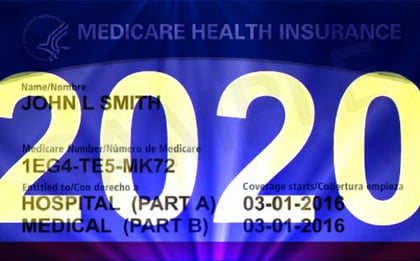Congress wants users of Medicare supplement insurance policies, or “Medigap” policies, to feel at least a small financial pinch when they get care.
A federal law — the Medicare Access and CHIP Reauthorization Act of 2015 (MACRA) — is pushing state insurance regulators to set a minimum deductible requirement for Medigap policies starting in 2020.
State insurance regulators will talk about the new Medigap deductible requirements Thursday, during a conference call organized by the National Association of Insurance Commissioners’ Senior Issues Task Force.
(Related: Regulators polish the proposed Medigap Plan G)
One message the task force is trying to communicate is that, under current federal law, states that fail to adopt the new minimum Medigap deductible requirements by 2020 may lose the right to regulate Medigap coverage.
The task force has posted three new documents about the MACRA Medigap changes: a collection of answers to frequently asked questions, or FAQs, aimed at insurance regulators; a sample MACRA consumer alert; and a sample MACRA alert aimed at insurance agents and insurance brokers.
The First-Dollar Coverage Fight
The traditional Medicare insurance program includes many coverage gaps, both to hold down direct spending and to encourage patients to avoid unnecessary use of care.
Many people who use traditional Medicare coverage, or “Original Medicare,” buy Medigap policies to fill in most or all of the gaps.
Congress passed a law creating standardized Medigap plan types, or “letter plans,” in 1990.
The richest and most popular “letter plan,” Plan F pays all of the Original Medicare “cost-sharing amounts,” such as the Medicare Part A hospitalization program deductible and the Medicare Part B physician and outpatient services deductible.
Another, less common letter plan, Plan C, also pays the Medicare Part A and Medicare Part B deductibles.
The Skin-in-the-Game Fight
Over the years, many health policy specialists have argued that Medigap Plan C and Plan F ”first dollar” coverage encouraged waste, fraud and abuse, by making Plan F users feel as if their care was free.
First-dollar coverage opponents fought for years to require all Medigap users to pay something out-of-pocket for their care.
Health policy specialists often refer to the idea of requiring patients pay something for their care as giving patients “skin in the game,” or a financial stake in controlling health care spending.
Critics of the skin-in-the-game philosophy argue that even small out-of-pocket charges may discourage patients from getting necessary care. Skin-in-the-game critics say delays in getting what appears to be routine care could let minor health problems turn into major health problems.
MACRA Medigap Letter Plan Rules
In 2015, critics of first-dollar coverage won out over the critics of the skin-in-the-game philosophy. Congress included a provision in MACRA that bans the sale of new first-dollar coverage Medigap plans, starting in 2020.
Consumers who become eligible for Medicare before Jan. 1, 2020, can continue to buy Medigap Plan C or Medigap Plan F coverage.
Consumers who become eligible for Medicare on Jan. 1, 2020, or later will have to take responsibility for paying the Medicare Part B physician and outpatient services deductible themselves.
For 2019, the Medicare Part B deductible is $185.
Regulators and insurers have responded to the new requirements by creating two new Medigap letter plans, for people who will become eligible for Medicare on or after Jan. 1, 2020: Medigap Plan D and Medigap Plan G.
Medicare Plan D will be the same as Medigap Plan C, except that the user will have to pay the Medicare Part B deductible.
Medigap Plan G will be the same as Medigap Plan F, except that the user will have to pay the Medicare Part B deductible.
What the Senior Issues Task Force Is Saying
Here are five things the task force is saying about the MACRA changes.
1, The federal government is on top here.
The federal government usually leaves regulation of the business of insurance to the states.









 March 06, 2019 at 02:38 PM
March 06, 2019 at 02:38 PM











